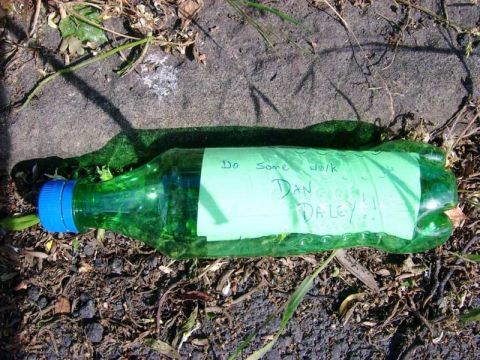Rubbish research in Axisweb’s cast out MAP Magazine archive (part 2):
MAP Issue 17, Spring 2009 (p.88)
Review: Superflex, South London Gallery, 16 January – 1 March.
Kate Cowcher reviews Superflex’s film Flooded McDonald’s. “Certianly waste-generating, waist-expanding global corporations such as McDonald’s share in the blame for climate chaos but Superflex’s film is no place for smug moralising. The line between beautiful and grotesque, funny and frightening, hero and villain, is perilously porous and yet complacency is not an option.”
http://superflex.net/floodedmcdonalds/
MAP Issue 21, Spring 2010 (p.69)
Ben Rivers on Tuvalu where he visited to shoot footage for his video Slow Action (2010): “I don’t think there is much in the country: a bunch of semi-submerged islands, some leftover second world war machinery, and a society that can’t afford to get rid of its rubbish, and so the detritus floats around the feet of the houses (no help from Britain who tossed it aside after being its colonial usurper).”
Ben River interview at Picture This https://www.youtube.com/watch?v=wng4jk_vXns
MAP issue 22, Summer 2010 (p44-49)
Chapter One is a feature of Mexican artist Martin Soto Climent by Dominic Paterson. The cover image of this issue is Soto Climent’s Impulsive Chorus (2009). “Empty beer cans are arranged in a cosy circle, their open ‘mouths’ inevitably bringing to mind the communal singing which their contents might have fuelled. […] Cans, bottles, cutlery, boxes, purses, bags, wigs, underwear, tights, shoes: the things which Soto Climent is attracted tend to be objects of consumption, it4sm of clothing or accessories. Perhaps, most significantly, these objects all lead back to the body, as proxies or as metonymic figures.”
http://www.vvork.com/wp-content/uploads/2012/03/MASC153-1024×767.jpg
MAP issue 22, Summer 2010 (p.76/77)
A feature on GI Festival mentions Christoph Büchel’s LAST MAN OUT TURN OFF LIGHTS at Tramway: “Inside the maw of this huge industrial space, shipping containers have been converted into jail cells, the main hall is filled with the exoskeleton of a crashed jet with bunt out seats. A rank buring smell fills the space. It’s a terrifying reconstruction of sorts, and produces an omnipresent sense of dread.”
http://www.tumblr.com/photo/1280/kiameku/2359392257/1/tumblr_ldmiufLaWk1qbt4hl




